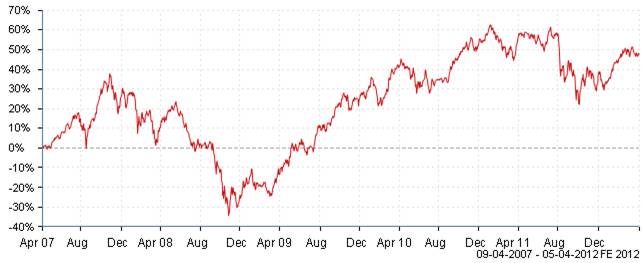What attitude to investment risk should I adopt?

This is the $64,000 question and, unfortunately, one to which there is no clear-cut answer. In simple terms, there tends to be an element of Newton’s Third Law of Motion at play – action and reaction are equal and opposite – risk and reward are equal and opposite. This is an over-simplification, but, in general terms, the lower the risk, the lower the return, the higher the risk the higher the return. However, the opposite also applies – the lower the risk, the lower the potential for loss, the higher the risk, the greater the potential for loss.
Elsewhere is an article on the factors an Investor should consider when evaluating their attitude to investment risk and this article adds to that discussion by giving some practical examples.
Investor or Speculator?
The one golden rule about investment that our Grannies taught us was about eggs and baskets. The Investor who always takes heed of that advice and has their portfolio broadly diversified, reduces the risk of loss. The Speculator tends to shun that advice, have less diversification and, hence, greater exposure to loss. Consequently, whilst the Investor can be exposed to losing some of their money, the Speculator can be exposed to losing all of their money.
An Investor has a prudent cash reserve for both known and unforeseeable contingencies, over the next 3-years or more, and has set a medium to long-term investment goal. Consequently, the Investor is less concerned abut short-term market movements, so long as the portfolio is on-track to achieve the ultimate objective.
The Speculator, on the other hand, doesn’t have a prudent reserve and only has short-term goals. Consequently, the Speculator is highly focussed on short-term market movements. Whenever a Polly Peck situation arises – Polly Peck was a constituent of the FTSE100 index that collapsed spectacularly in 1990 – the news companies and newspapers can always find someone to interview who has lost their life savings. They were a Speculator.
A lower risk investment
The following chart (Source Financial Express) is for a typical “Cautious Managed” investment (actually the IA Mixed Investment 0 -35% shares index), having no more than 35% of the total funds invested in “growth” investments, such as shares, commodities, etc:

The period represented by this chart from April 2007 to April 2012 was a particularly testing time for Investors, spanning as it did the Credit Crunch and the subsequent Sovereign Debt Crisis, particularly involving countries like Portugal, Ireland, Italy, Greece and Spain.
There is no risk of loss as such for the Investor who bought in April 2007 with a 5-year or more investment horizon, as they have seen some 10% growth over that period. However, the Speculator, who had a 2-year horizon would have seen a near 20% loss by April 2009.
A higher risk investment
If we now compare this to a higher-risk investment, such as the IMA Asia Pacific (excluding Japan) index (Source Financial Express). We see much greater prospects for both loss and gain.
Over the same time-scale as the earlier chart, we see returns from +40% to -40% and back to +40% or more.
The journey
In both these examples, the Investor has had a difficult journey towards their longer-term objective. The lower risk investment didn’t cross the gain-line until something like 3-years into the investment period. The higher risk investment saw some short-term growth at the outset, before succumbing to the global crisis, but then recovering strongly, re-establishing previous highs some 3-years into the investment journey and then going further ahead.
The lessons
The lessons are twofold. Firstly, deciding on a medium to longer-term strategy backed by a prudent cash reserve. Secondly, not being distracted by short-termism part way through that longer journey.
What’s next?
If you have money to invest or have already invested, but are unsure of the suitability of those investments, let’s start a discussion. Please fill-in the form below and I’ll give you a link to our risk-profiling tool to start off a review process.








-

-

-

0800 074 8755info@clivebarwell.co.uk